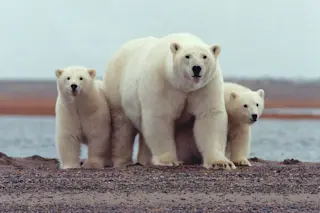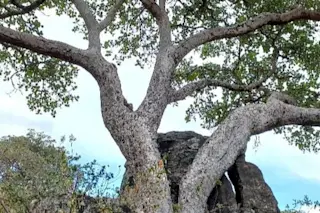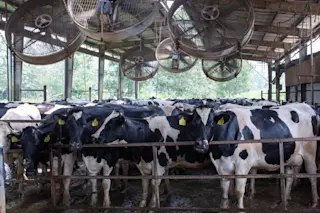A polar bear keeps close to her young along the Beaufort Sea coast in the Arctic National Wildlife Refuge. (Source: Susanne Miller/U.S. Fish and Wildlife Service) Arctic sea ice has likely reached it's minimum geographic extent for 2015, coming in at fourth lowest in the satellite record and continuing a long-term downward trend, according to a just-released update from the National Snow and Ice Data Center. The news brings to mind a dramatic image of an emaciated polar bear in Svalbard, Norway that recently went viral. The bear quickly become a poster child for climate change. But posters and scientific evidence aren't quite the same thing. While it's true that shrinking sea ice in a warming Arctic is a plausible explanation for what happened to that poor polar bear, more science is needed to get a definitive answer on whether entire polar bear populations really are declining on Svalbard and ...
Polar Bears May Be Starving in the Barents Sea Area, But Thanks to Russia We Don't Know If It's Climate Change
Discover how polar bear populations are affected by shrinking sea ice in the Arctic and the implications of climate change.
More on Discover
Stay Curious
SubscribeTo The Magazine
Save up to 40% off the cover price when you subscribe to Discover magazine.
Subscribe













